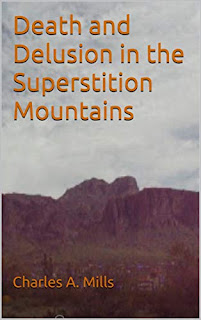If
you have ever heard of the nation of “Fredonia”, you probably associate it with
a mythical European state portrayed in the Marx Brothers' classic film Duck Soup.
There
was, however, an actual, all be it short lived, independent state of “Fredonia”
carved out in East Texas and centered on the modern day city of Nacogdoches
(population 33,500).
In
the early 1800’s, the Republic of Mexico granted land and privileges to so
called empresarios who agreed to bring settlers into the sparsely
inhabited areas of Texas. The empresarios pledged loyalty to Mexico,
but in reality were a long way from the population centers of Mexico and became
quite independent. Stephen Austin was
the most famous of these empresarios,
but there were others, including one Haden Edwards.
In
September 1825, Haden Edwards acquired a grant from Mexico to settle eight
hundred families in an area that included Nacogdoches. Edwards posted notices
in Nacogdoches demanding that all current landowners show evidence of their
claims or forfeit their land to him. Edwards’ high handed methods alienated the
existing population. Ill feelings
festered until authorities in Mexico annulled the Edwards land grant in 1826
and ordered Edwards to leave Texas.
Lt.
Col. Mateo Ahumada, set out from San Antonio with 110 infantrymen and twenty
mounted troopers to enforce the expulsion order. Edwards, in turn, vowed to recruit an army
and win independence from Mexico.
Edwards named his new country the Republic of Fredonia, and hurriedly
sought to finalize a treaty with the nearby Cherokee to strengthen his hand. Edwards also petitioned Stephen Austin for
aid. Not only did Austin refuse to help
the revolution, but he also sent one hundred militiamen to support the Mexican
army.
Haden
Edwards appointed his brother, Benjamin, to lead the new nation, while he went
to the United States to raise support. Benjamin Edwards gathered a band of
thirty loyal men and rode to Nacogdoches. The rebels seized control of the Old
Stone Fort and ripped down the Mexican flag, re-placing it with the flag of
Fredonia.
The
new republic only survived a few weeks. When the Mexican army arrived on
January 31, 1827, the revolutionaries fled across the border into the United
States without firing a shot.
Sneak Attack! (Four Alternative History Stories)
Sun Tzu, the Master of War, once said,
“Those who are skilled in producing surprises will win. In conflict, surprise
will lead to victory. ” Here are four stories about the history of the world IF
wars we know about happened differently or IF wars that never happened actually
took place.
Including:
1.The Hostage, in which Abraham Lincoln is kidnapped by the rebels.
2.The German Invasion of America of 1889, in which Germany unexpectedly
launches its might against the United States.
3.The Invasion of Canada 1933, in which the new American dictator launches a
sneak attack on Canada.
4.Cherry Blossoms at Night: Japan Attacks the American Homeland (1942), in
which Japan attacks the American homeland in a very surprising way.




















































